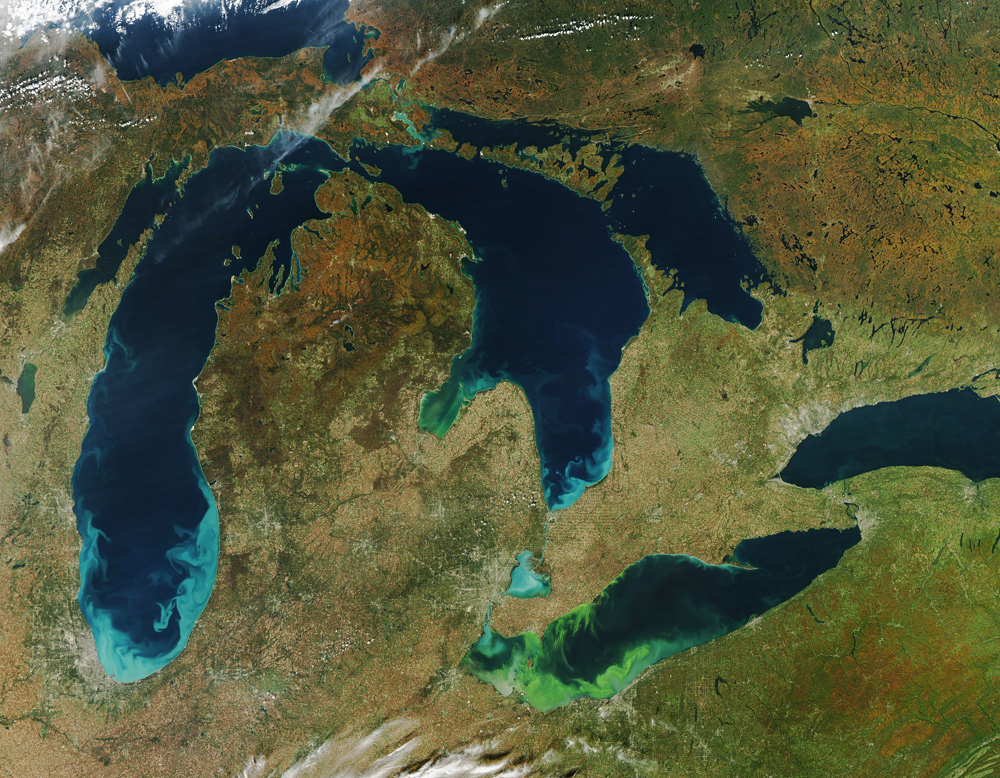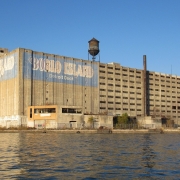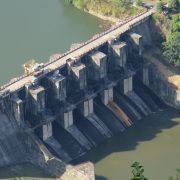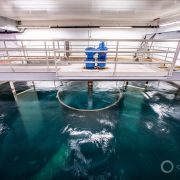Lake Erie Toxic Algae Bloom Forecast Spikes
After a slow start this spring, nutrient pollution accelerated over the past week in Lake Erie.

By Codi Kozacek
Circle of Blue
The annual bloom of toxic algae in Lake Erie’s western basin will likely be worse than previously thought, according to the latest bulletin released by the National Oceanic and Atmospheric Administration (NOAA) and Heidelberg University. The early-season projection predicts that the bloom could become nearly as severe as the one in 2013 — the second largest on record — and will be at least as severe as the bloom in 2009.
–Laura Johnson, research scientist
National Center for Water Quality Research
Heidelberg University
Last August, toxins released by the blooms contaminated water supplies for nearly half a million people in Toledo, Ohio. The new forecast comes just days after researchers detected the first signs of the Microcystis cyanobacteria that create the toxins, a development that they say is normal for this point in the season.
A week ago, models predicted this year’s bloom would, at most, reach a severity level of six, on a scale from one to 10. This week, that projection bumped up two points to a maximum of eight. For comparison, the 2013 bloom measured as a nine on the index, while the largest ever, in 2011, weighed in at 10.
According to Laura Johnson, a research scientist at Heidelberg University’s National Center for Water Quality Research, the more severe forecast is attributable to torrential rainstorms in northeast Ohio, home to the Maumee River.
“We’ve had an insane amount of rain,” Johnson told Circle of Blue. “It’s been crazy in the past couple of weeks. I just looked at the Midwest Climate Center’s webpage, and some areas of the Maumee Basin were getting 15 to 18 inches of rain over the past month.”
The models that predict the size of Lake Erie’s algae bloom are based on measurements of the amount of water and phosphorus flowing down the Maumee River, which is the largest source of the nutrients that feed algae blooms in Lake Erie. These nutrients come primarily from fertilizers that are spread on farm fields.
While the phosphorus data are not yet finalized, water flows from the river into the lake — known as discharge — suggest that approximately 1,378 metric tons of phosphorus have been dumped into the lake since March, a 56 percent increase from last week’s estimate.
Scientists know that phosphorus flowing into the lake between March 1 and July 31 — called the loading season — exerts the most influence on Lake Erie’s algae blooms, which typically appear in August and September. However, they cannot say with certainty how a late-season spike in phosphorus will affect bloom severity compared to a spike that occurs earlier in the season.
“As of now, we don’t think it will be too big of a deal. But I do know that in 2013, when we got higher than anticipated July [phosphorus] loads, we had to reevaluate how important they may be,” Johnson said. “There is some potential that if [the spikes] are closer to when the blooms occur, they could be more important, but we don’t have a lot of evidence for that quite yet.”
The last year with a June phosphorus spike was 2004. The algae bloom that year was a three on the bloom severity index. This June, however, much more water was flowing down the Maumee River. In the period since 1975, when Heidelberg began monitoring the Maumee, water discharges for the month were the highest since 1981, Johnson said.
A news correspondent for Circle of Blue based out of Hawaii. She writes The Stream, Circle of Blue’s daily digest of international water news trends. Her interests include food security, ecology and the Great Lakes.
Contact Codi Kozacek











Leave a Reply
Want to join the discussion?Feel free to contribute!